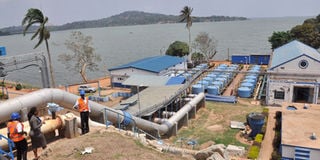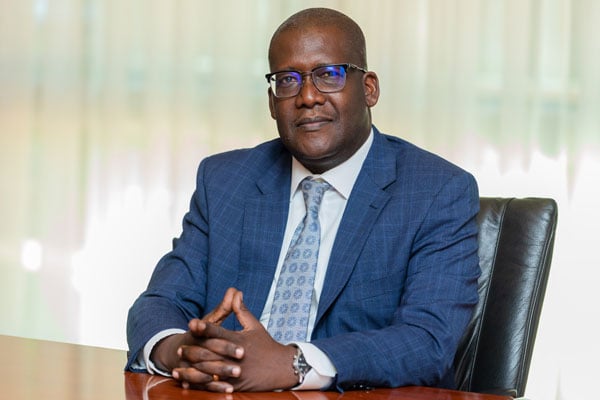Shs122b Nalukolongo sewerage plant will be operational by 2022

The Ggaba water treatment plant. Through a loan from ADB to the government of Uganda, National Water and Sewerage Corporation has constructed different sewerage plants. PHOTO BY Stephen Otage
What you need to know:
Unlike the Kinawataka pre-treatment plant that pumps sewerage for final treatment at Bugolobi, the Nalukolongo plant, will host and treat the waste in-house Christine Kasemiire writes.
The €30m (Shs122b) Nalukolongo sewerage treatment plant is expected to be commissioned within the next three years.
Speaking during the annual Institute of Certified Public Accountants conference in Entebbe last week, Dr Silver Mugisha, managing director, National Water and Sewerage Corporation (NWSC), said about six acres of land has been procured.
“The land is already secured. We have already paid for it and now we are in the procurement process for it to be constructed,” he said.
Dr Mugisha added: “In the next two or three years, that one will also be finished to drain Rubaga, parts of Mutundwe, Kabowa, so all those parts are covered.”
Unlike the Kinawataka pretreatment plant that pumps sewerage for final treatment at Bugolobi, the Nalukolongo plant, will host and treat the waste in-house.
“The one in Nalukolongo will be self-contained; it will receive and finish treatment there. The advantage we have with Nalukolongo and Lubiigi is that there is a swamp so you treat sewerage up to a certain level then release it and then the swamp does the final treatment,” he explained.
Construction of the plant is one of the objectives of the long-term sanitation development programme for Kampala stretching to 2033.
The project appraisal report document created by African Development Fund in 2017, cited a need to expand the country’s sewerage network system which only covered 7.5 per cent of the total population.
Through a loan from ADB to the government of Uganda, NWSC has constructed different sewerage plants.
For instance, the Lubiigi treatment plant constructed in 2014, Kinawataka pretreatment plant and Bugolobi.
“The one of Bugolobi is technically commissioned; when you go there you find it running so is the one in Kinawataka,” he noted.
Another water treatment plant will be erected in Kajansi to treat about 135m litres of water alongside a sewerage plant to improve the country’s sewerage coverage.
The projects cumulatively are costing government about €173m (Shs703.8b) shared by the plant, consuming €128m (Shs520.7b) and €45m (Shs183b) for the sewer pipes.
Expensive
Evidently, construction and expansion of sewerage systems is not a cheap affair. The move to expand the sewerage system is constrained by a debate of priority on what action takes precedence.
Currently, NWSC has only 600,000 customers connected, meaning millions of people do not have access to piped water.
In the interim, Dr Mugisha said the plan of expanding the sewerage system is centred on Kampala Metropolitan, such that customer connection are not affected.
“The approach we are using now is let us put a sewerage system where people cannot use onsite sanitation like in the middle of the city, you cannot have a septic tank, so there we have put a sewerage system,” he justified.
Outside sewerage system coverage
In areas outside the network of sewerage network, NWSC is constructing a sludge handling facility to mitigate waste disposal from septic tanks.
“We are trying to construct those facilities nearby so that they can have where they can empty as we broaden our capacity to increase the sewerage systems in all those places,” he said encouraging use of onsite sanitation
Technologies aiding in utility efficiency
Water leakages stemming from pipe bursts affect many utility companies’ efficiency.
According to Mr Eric Nyadimo, managing director, Oakar Services Limited, a geospatial consultancy firm, the average global water loss from utility companies is 40 per cent.
He, however, advised the companies to utilise satellite technology to detect water leakages in the network system to curb losses and inefficiencies.




